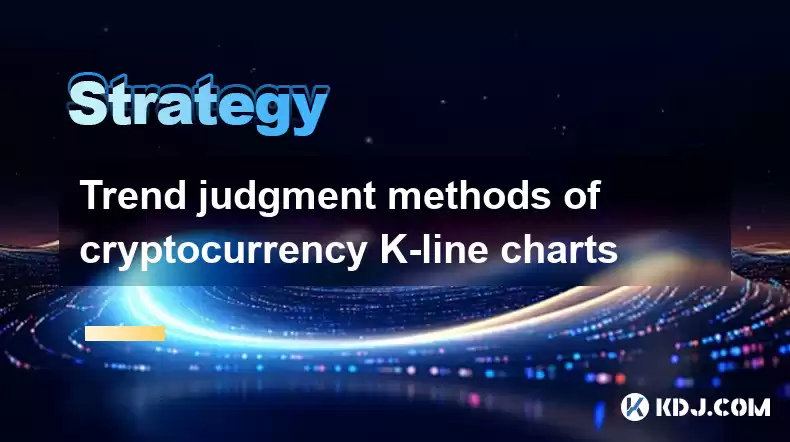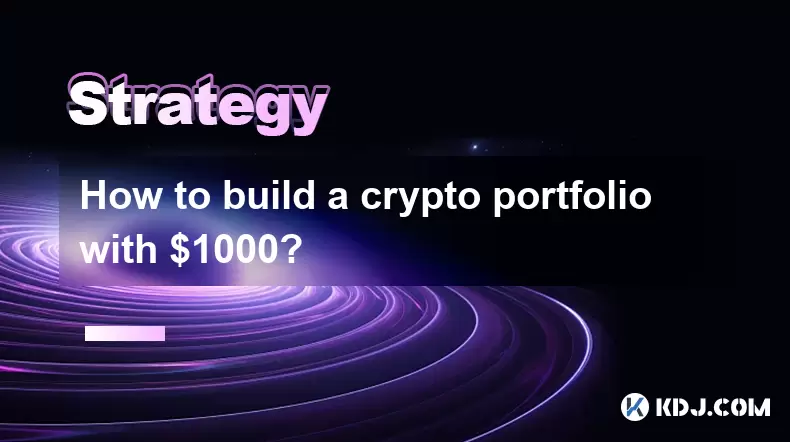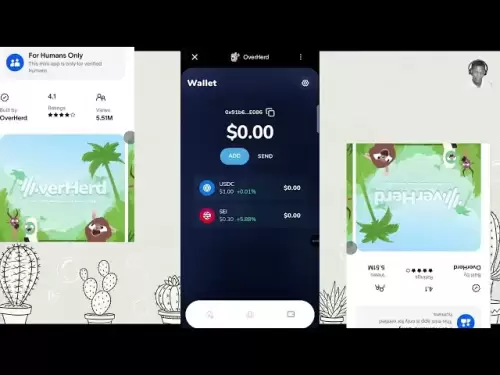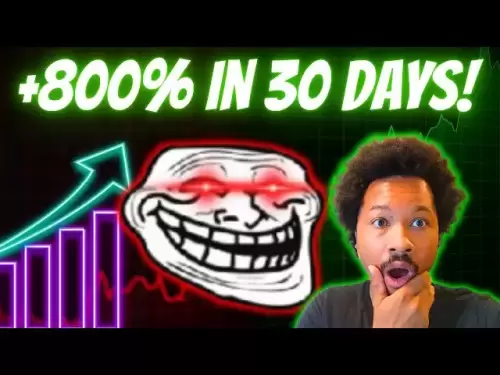-
 Bitcoin
Bitcoin $114200
-0.03% -
 Ethereum
Ethereum $3649
-0.25% -
 XRP
XRP $2.963
-2.31% -
 Tether USDt
Tether USDt $0.9997
-0.02% -
 BNB
BNB $761.0
-0.17% -
 Solana
Solana $164.6
-2.06% -
 USDC
USDC $0.9997
-0.02% -
 TRON
TRON $0.3321
-0.45% -
 Dogecoin
Dogecoin $0.2010
-2.49% -
 Cardano
Cardano $0.7282
-2.60% -
 Hyperliquid
Hyperliquid $37.56
-2.50% -
 Stellar
Stellar $0.3935
-3.18% -
 Sui
Sui $3.440
-1.36% -
 Chainlink
Chainlink $16.49
-1.80% -
 Bitcoin Cash
Bitcoin Cash $558.0
-1.38% -
 Hedera
Hedera $0.2407
-1.49% -
 Avalanche
Avalanche $22.27
-2.29% -
 Ethena USDe
Ethena USDe $1.001
0.00% -
 Litecoin
Litecoin $118.6
-4.00% -
 UNUS SED LEO
UNUS SED LEO $8.995
0.02% -
 Toncoin
Toncoin $3.190
-5.11% -
 Shiba Inu
Shiba Inu $0.00001214
-1.51% -
 Uniswap
Uniswap $9.655
-1.88% -
 Polkadot
Polkadot $3.638
-0.50% -
 Monero
Monero $292.1
-1.82% -
 Dai
Dai $1.000
-0.03% -
 Bitget Token
Bitget Token $4.312
-0.90% -
 Cronos
Cronos $0.1389
-0.32% -
 Pepe
Pepe $0.00001026
-2.44% -
 Aave
Aave $258.2
-1.12%
Trend judgment methods of cryptocurrency K-line charts
K-line charts are essential for analyzing crypto price trends, showing open, close, high, and low prices, with patterns indicating market sentiment and potential movements.
Apr 02, 2025 at 01:36 pm

Understanding K-Line Charts in Cryptocurrency Trading
K-line charts are fundamental tools for analyzing cryptocurrency price movements. Each candlestick represents a specific time period (e.g., 1 hour, 1 day, 1 week), showing the opening, closing, high, and low prices. Understanding these four data points is crucial for interpreting price action and predicting potential trends. Different candlestick patterns reveal insights into market sentiment and potential future price movements. Effective use requires practice and experience in identifying reliable patterns amidst the volatility inherent in the crypto market.
Identifying Uptrends Using K-Line Charts
An uptrend signifies a sustained increase in price over time. Several key indicators on K-line charts help identify this trend. Sustained higher highs and higher lows are a primary indication. Each successive candlestick's high should be greater than the previous one, and similarly, each low should be higher than the preceding low. Bullish candlestick patterns, like engulfing patterns or morning stars, reinforce the uptrend signal. The volume should generally increase during these upward movements, indicating strong buying pressure. However, always consider the broader market context.
Identifying Downtrends Using K-Line Charts
A downtrend, conversely, showcases a consistent price decrease. Lower highs and lower lows are the hallmark of a downtrend. Each subsequent candlestick's high should be lower than the previous high, and each low should be lower than the preceding low. Bearish candlestick patterns, such as engulfing patterns or evening stars, often accompany downtrends. Decreasing volume during a downtrend can sometimes signal weakening selling pressure, potentially suggesting a trend reversal. But remember, the crypto market is volatile; a downtrend can reverse unexpectedly.
Identifying Sideways Trends (Consolidation) Using K-Line Charts
Sideways or consolidation trends show price movement within a defined range, neither decisively up nor down. Horizontal price channels are common features. The price fluctuates between a resistance level (upper boundary) and a support level (lower boundary). Volume is typically lower during consolidation periods than during strong uptrends or downtrends. Consolidation periods can precede significant price movements, either upward or downward, making them crucial to observe. Breaking through the resistance or support levels often signals a breakout, indicating a potential change in trend.
Using Moving Averages to Confirm Trends
Moving averages (MAs) are valuable tools for smoothing out price fluctuations and identifying trends. Popular MAs include the simple moving average (SMA) and the exponential moving average (EMA). A rising MA generally confirms an uptrend, while a falling MA suggests a downtrend. The crossover of different MAs (e.g., a 50-day MA crossing above a 200-day MA) can signal a potential trend change. However, MAs lag behind price movements, meaning they might not always accurately reflect very short-term changes.
Using Support and Resistance Levels
Support levels represent price points where buying pressure is strong enough to prevent further price declines. Resistance levels, conversely, are price points where selling pressure halts upward momentum. Repeated testing and bouncing off these levels confirm their significance. Breakouts above resistance or below support can signal significant trend changes. However, false breakouts (brief price movements beyond these levels followed by a reversal) are common, requiring cautious interpretation. Observing volume during these breakouts can help confirm their validity.
Identifying Trend Reversals
Trend reversals are shifts from an uptrend to a downtrend or vice versa. Several K-line chart patterns indicate potential reversals. Head and shoulders patterns are classic reversal patterns. Other indicators include significant volume changes, divergences between price and indicators (like RSI or MACD), and breakouts of established support or resistance levels. Confirming a trend reversal requires careful observation of multiple indicators and patterns. Relying on a single indicator can lead to inaccurate interpretations.
Importance of Volume Analysis
Volume analysis complements price analysis, providing crucial context. High volume during price increases confirms strong buying pressure, strengthening the uptrend signal. Conversely, high volume during price decreases indicates strong selling pressure, reinforcing the downtrend. Low volume during price movements often suggests weak conviction and can be a warning sign of a potential trend reversal. Analyzing volume alongside price action provides a more comprehensive understanding of market dynamics.
Combining Technical Indicators with K-Line Analysis
While K-line charts provide valuable visual information, combining them with other technical indicators enhances accuracy. Relative Strength Index (RSI), Moving Average Convergence Divergence (MACD), and Bollinger Bands are popular choices. These indicators offer additional perspectives on momentum, trend strength, and potential overbought or oversold conditions. Using a combination of indicators and K-line patterns helps filter out false signals and improve the reliability of trend judgments.
Risk Management and Emotional Discipline
Even with thorough analysis, cryptocurrency trading involves significant risk. Effective risk management is crucial. This includes using stop-loss orders to limit potential losses, diversifying your portfolio, and only investing what you can afford to lose. Emotional discipline is equally important; avoid impulsive trading decisions based on fear or greed. Sticking to your trading plan and managing your emotions are key to long-term success.
The Limitations of K-Line Chart Analysis
K-line chart analysis is not foolproof. Market conditions are constantly changing, influenced by various factors beyond technical analysis. News events, regulatory changes, and overall market sentiment can significantly impact price movements, making accurate predictions challenging. Always consider the broader context and avoid over-reliance on technical analysis alone. Remember that past performance is not indicative of future results.
Frequently Asked Questions
Q: What are the most reliable candlestick patterns for identifying trends?
A: Engulfing patterns, morning/evening stars, and head and shoulders patterns are commonly used, but their reliability depends on context and confirmation from other indicators.
Q: How do I determine the appropriate timeframe for K-line analysis?
A: The optimal timeframe depends on your trading strategy. Short-term traders might use 1-hour or 5-minute charts, while long-term investors might prefer daily or weekly charts.
Q: Can K-line charts be used for all cryptocurrencies?
A: Yes, K-line charts are applicable to all cryptocurrencies, though the specific patterns and trends may vary depending on the individual cryptocurrency's characteristics and market dynamics.
Q: What is the difference between SMA and EMA?
A: SMA gives equal weight to all data points within the period, while EMA gives more weight to recent data points, making it more responsive to recent price changes.
Q: How can I improve my K-line chart reading skills?
A: Practice is key. Start by analyzing historical charts, experimenting with different indicators, and gradually refining your interpretation skills. Consider using demo accounts to test your strategies before using real funds.
Disclaimer:info@kdj.com
The information provided is not trading advice. kdj.com does not assume any responsibility for any investments made based on the information provided in this article. Cryptocurrencies are highly volatile and it is highly recommended that you invest with caution after thorough research!
If you believe that the content used on this website infringes your copyright, please contact us immediately (info@kdj.com) and we will delete it promptly.
- Coinbase, Financing, and the Crypto Market: Navigating Choppy Waters in NYC Style
- 2025-08-06 12:50:11
- Bitcoin in Indonesia: Crypto Education and Economic Strategy
- 2025-08-06 12:50:11
- DeriW Mainnet: Zero Gas Fees Revolutionize On-Chain Derivatives Trading
- 2025-08-06 10:30:11
- IOTA, Cloud Mining, and Eco-Friendly Crypto: A New York Investor's Take
- 2025-08-06 10:30:11
- Kaspa (KAS) Price Prediction: August 6 - Will It Break Free?
- 2025-08-06 10:50:12
- Pension Funds, Bitcoin ETFs, and Exposure: A New Era of Institutional Crypto Adoption
- 2025-08-06 12:55:12
Related knowledge

How to avoid common crypto investment mistakes?
Jul 13,2025 at 01:35am
Understanding the Risks of Crypto InvestmentInvesting in cryptocurrency can be highly rewarding, but it also comes with significant risks. One of the ...

What is a long-short crypto strategy?
Jul 15,2025 at 10:56am
Understanding the Basics of a Long-Short Crypto StrategyA long-short crypto strategy is an investment approach where traders simultaneously take long ...

What is a long-short crypto strategy?
Jul 11,2025 at 01:28pm
Understanding the Basics of Long-Short Crypto StrategyA long-short crypto strategy is an investment approach where traders take both long and short po...

How to use the RSI indicator for crypto?
Jul 12,2025 at 03:56pm
Understanding the RSI Indicator in Cryptocurrency TradingThe Relative Strength Index (RSI) is a momentum oscillator used to measure the speed and chan...

Is copy trading a good strategy for crypto beginners?
Jul 12,2025 at 08:28am
Understanding Copy Trading in the Cryptocurrency MarketCopy trading is a strategy where novice traders replicate the trades of experienced investors a...

How to build a crypto portfolio with $1000?
Jul 13,2025 at 08:14pm
Understanding the Basics of Cryptocurrency InvestmentBuilding a crypto portfolio with $1000 starts with understanding the fundamentals of cryptocurren...

How to avoid common crypto investment mistakes?
Jul 13,2025 at 01:35am
Understanding the Risks of Crypto InvestmentInvesting in cryptocurrency can be highly rewarding, but it also comes with significant risks. One of the ...

What is a long-short crypto strategy?
Jul 15,2025 at 10:56am
Understanding the Basics of a Long-Short Crypto StrategyA long-short crypto strategy is an investment approach where traders simultaneously take long ...

What is a long-short crypto strategy?
Jul 11,2025 at 01:28pm
Understanding the Basics of Long-Short Crypto StrategyA long-short crypto strategy is an investment approach where traders take both long and short po...

How to use the RSI indicator for crypto?
Jul 12,2025 at 03:56pm
Understanding the RSI Indicator in Cryptocurrency TradingThe Relative Strength Index (RSI) is a momentum oscillator used to measure the speed and chan...

Is copy trading a good strategy for crypto beginners?
Jul 12,2025 at 08:28am
Understanding Copy Trading in the Cryptocurrency MarketCopy trading is a strategy where novice traders replicate the trades of experienced investors a...

How to build a crypto portfolio with $1000?
Jul 13,2025 at 08:14pm
Understanding the Basics of Cryptocurrency InvestmentBuilding a crypto portfolio with $1000 starts with understanding the fundamentals of cryptocurren...
See all articles

























































































